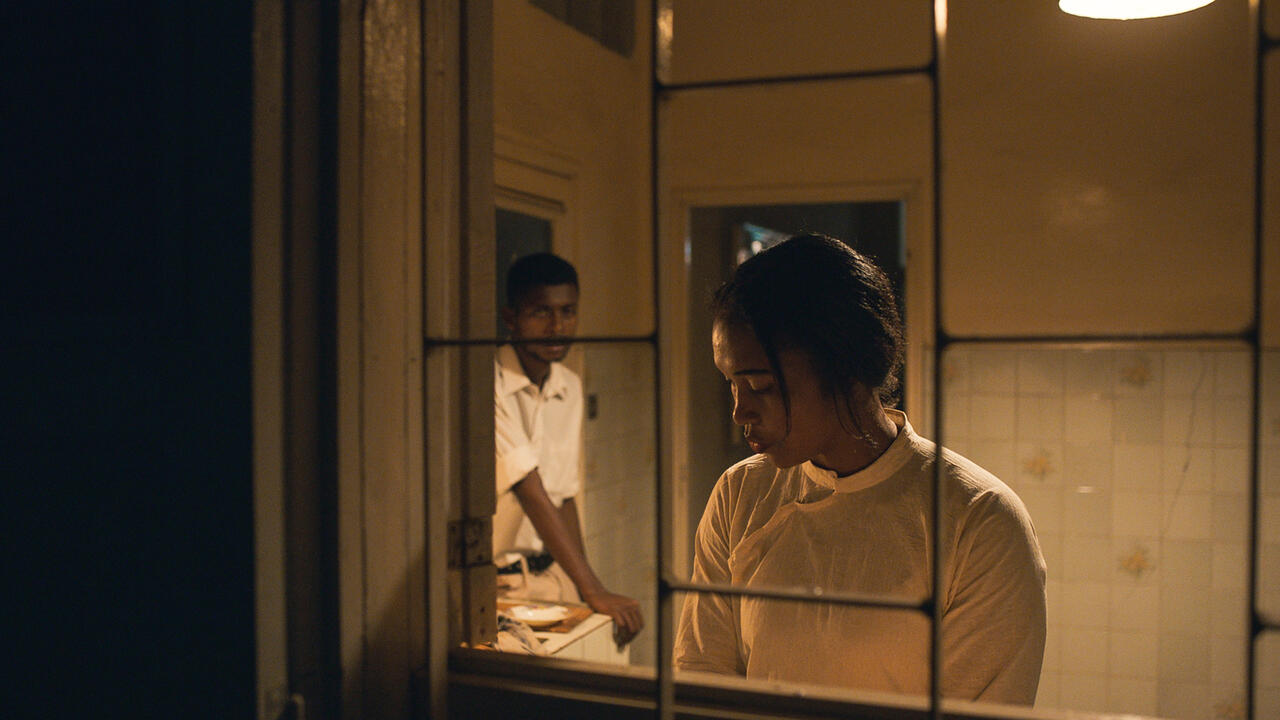Chris Ofili
New Museum, New York, USA
New Museum, New York, USA

They say absence makes the heart grow fonder; I think this accounts for why I took so much pleasure in looking at ‘Night and Day’ at the New Museum, Chris Ofili’s first US museum survey. Way back when, in mid-1990s Britain, Ofili’s work was hard to avoid. As an undergrad art student, my eye would snag on any newspaper story or magazine article about contemporary art, and Ofili’s early signature canvases were invariably used to illustrate any piece on the Young British Artists (yBas). At first, it was thrilling to see these galactic explosions of colour propped on dried and shellacked globes of elephant dung, swaggering along with titles such as Afrodizzia (1996), Pimpin’ ain’t easy (1997) and The Adoration of Captain Shit and the Legend of the Black Stars (Third Version) (1998). But, as the decade wore on, images of these Ofili paintings would appear repeatedly next to photos of, say, works by Damien Hirst or Sarah Lucas, becoming a default shorthand for the yBas. By the early 2000s, those funny, painstakingly detailed Ofili paintings had lost their pizzazz for me; familiarity had drained their batteries.
For many local visitors to Ofili’s survey show, this is the artist who caused outrage in 1999 when the exhibition ‘Sensation: Young British Artists from the Saatchi Collection’ arrived at the Brooklyn Museum. Ahead of the show’s opening, then-mayor Rudolph Giuliani played the offended Catholic boy and declared Ofili’s 1996 painting The Holy Virgin Mary – a work that used dung amongst its materials – to be ‘sick’ and threatened to remove a third of the museum’s funding. The show opened to huge controversy and, in December 1999, Ofili’s painting was vandalized by a retired schoolteacher who found it blasphemous.
There was no such controversy this time around and, seeing that painting afresh, it looked stately – a luminous gold icon. All those early works I’d become over-accustomed to in the 1990s now sizzled, shook, hummed and shone with a new energy. And yet the show was not without a political charge; opening at the end of a year of violent racial tension in the US, an exhibition at a major museum featuring so many depictions of the black body felt vital. (Indeed, the thoughtfully compiled exhibition catalogue includes an essay by Matthew Ryder that connects Ofili’s 2014 painting Blue Devils to issues around police racism in the UK.)
‘Night and Day’ (which was curated by Massimiliano Gioni with Gary Carrion-Murayari and Margot Norton) was spread across three floors of the New Museum and allowed viewers to see the full arc of Ofili’s development as an artist, from the goofy 1993 sculpture Shithead (a lump of dung made into a human head with teeth, hair and wire stuck to it) through to his recent suite of paintings inspired by Ovid’s Metamorphoses (c. 8 AD), canvases which seem to channel a strange host of 19th-and 20th-century artists – the elegance of Gustav Klimt, the dreaminess of Marc Chagall, Pierre Bonnard’s rustic warmth, maybe even hints of Mati Klarwein’s album artwork for Miles Davis – and synthesize them into something unmistakeably Caribbean in character. (Ofili has been living in Trinidad since 2005.)
The show included a group of abstract drawings; organic, radiating, disk-like forms that evoked cloud formations, oyster shells, plumes of smoke, or the leaves of succulents – and perhaps also the ‘automatic drawings’ of Henri Michaux (‘Afro Margin Two – Six’, 2004–05). In his series of watercolour portraits, ‘Afro Muses’ (1995–2005), the colours on the figures’ clothes bleed together like tie-dye and, juxtaposed with bold, graphic patterning, almost made the figures seem like they were from the late 1960s or early ’70s. Ofili’s ‘blue’ paintings – a variety of works painted between 2006 and 2014 – were shown in sepulchral gloom. Once your eyes adjusted to the dark, these deep indigo-coloured canvases glowed like stained glass in moonlight.
Today’s supporters of Ofili like to point out how the yBa tag was something akin to guilt by association, that his work was never really like that of his contemporaries in the UK during the ’90s. This is true but also misleading, as nobody’s work really looked the same as anyone else’s in the UK in the ’90s: a painting by Peter Doig was not the same as a Rachel Whiteread sculpture, which was not the same as a Steve McQueen video. As time grants clearer perspective on the art of that period, ‘Night and Day’ demonstrates that British art may not have been racially diverse, but it certainly produced artists capable of generating a rich plurality of images and forms.

























